Arborvitae trees are a favorite of residential and commercial landscapers across cold and temperate climates in North America. You’ve certainly seen arborvitae trees walking around your city or neighborhood, where they are planted as privacy hedges or landscaping accents. Over the last century, they have become integral parts of the urban and suburban American landscape.
IDENTIFY NEW PLANTS WITH PLANTSNAP
The Tree of Life
The name arborvitae means ‘tree of life.’ Botanists bestowed this name upon the western red cedar (Thuja plicata), in particular, because it is such a useful and important tree to the indigenous peoples of the Pacific Northwest. Along with sequoias, douglas fir, eucalyptus, and redwoods, the western red cedar is one of the tallest trees in the world. It can grow to be nearly 200 feet tall and 1,000 years old. Western red cedar wood is rot-resistant with clear grain, making it ideal for construction. Native Americans use western red cedar for building, canoes, hunting equipment, basketry, clothing, coffins, instruments, spiritual ceremonies, and much more.
While the western red cedar gave arborvitae their namesake, the eastern arborvitae (Thuja occidentalis) is actually the more commonly used species for landscaping.

A stand of old-growth western red cedar in the Pacific Northwest.
The Arborvitae Genus
All arborvitae trees are in the genus Thuja. This is a small genus of coniferous, evergreen trees; it only contains five species of trees. All Thuja species live in northern temperate zones that have decently cold winters. Two species are native to North America and the other three are native to East Asia. Humans have bred Thuja occidentalis and Thuja plicata for specific traits that make them successful landscaping plants.
Uses for Arborvitae
Arborvitae are a modern classic in the horticulturalists’ toolkit for a variety of reasons. They are easy to install, are low maintenance, grow well when planted densely together, and are an inexpensive plant option. These trees are usually used for privacy screens, landscaping accents, and windbreaks.
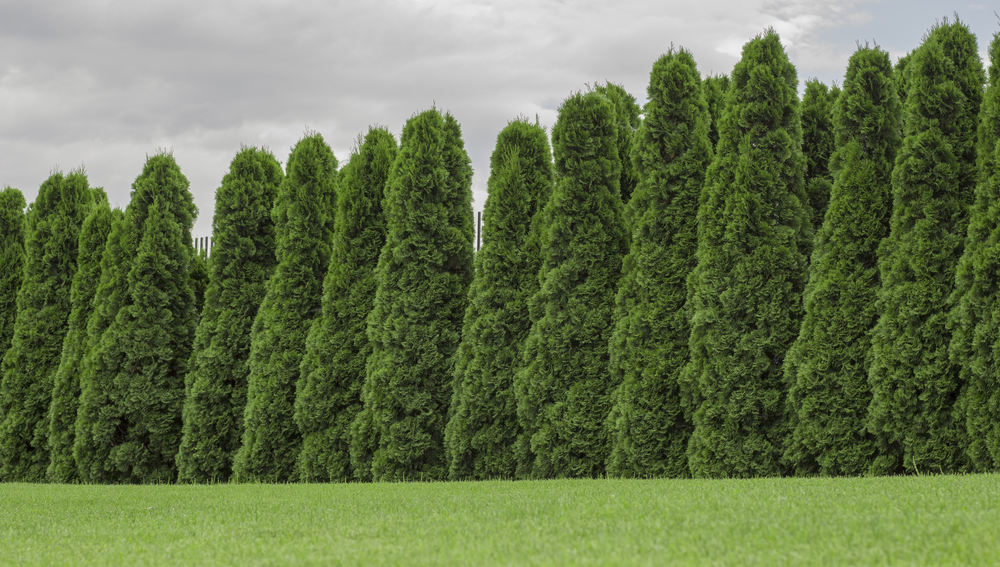
A privacy hedge of arborvitae completely obscures the landscape behind it.
Visual Barriers and Privacy Hedges
The most common use of the arborvitae is as a privacy hedge. Typically, many of these trees are planted just a few feet apart from each other in a line. When they grow up, they create a green wall of dense foliage that divides spaces. These evergreens keep their needles year-round, meaning they provide privacy during every season. They also tend to grow rather quickly, up to three vertical feet per year. Due to their year-round foliage, quick growth habit, and ease of care, landscapers often use arborvitae when installing a visual barrier. Some people think that arborvitae are overused in residential areas and that there are more interesting plants to choose from for privacy screens.
Windbreaks
Some of the attributes that make arborvitae successful privacy hedges also make them effective windbreaks. A windbreak is a row of trees planted perpendicular to the prevailing winds on the windward side of a crop or structure. Acting as a wall, the trees create a zone behind them with substantially less wind. This reduced wind decreases crop evapotranspiration, wind damage, and can make a residential area more pleasant. In places like California, eucalyptus and acacia are other kinds of trees often employed for windbreaks.
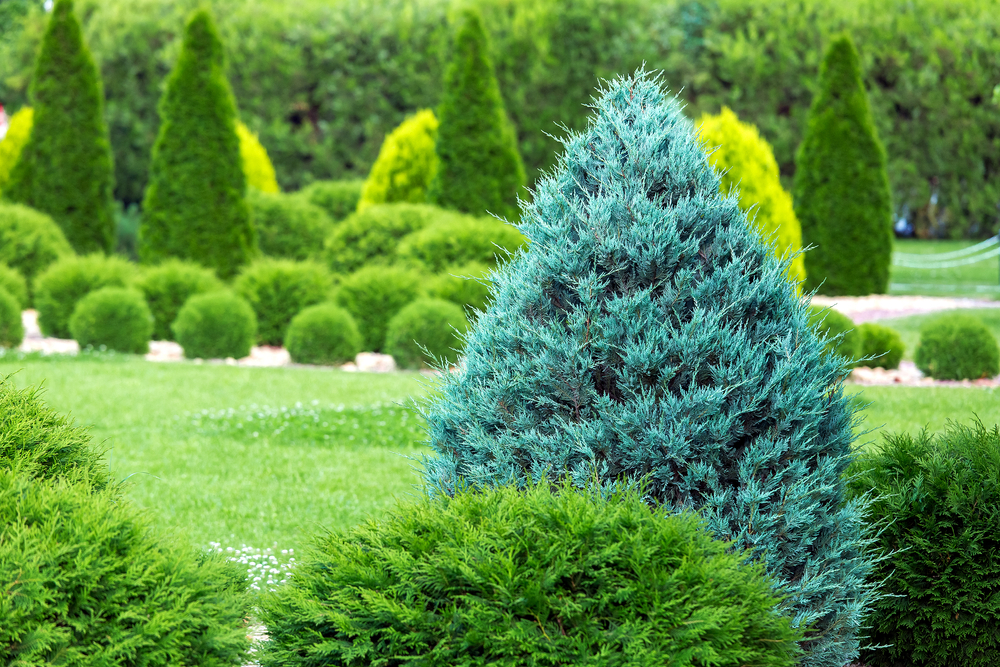
Many varieties of arborvitae add attractive elements to this garden. Notice how the different shapes, spacing, and foliage colors interact with one another.
Arborvitae as Landscaping Accents
While often planted as a continuous tall hedge, most arborvitae also work well as stand-alone plants. Taller varieties can work as a centerpiece of a garden, whereas smaller varieties are excellent sculptural additions and accents. The globe varieties of arborvitae are especially interesting as landscaping accents because of their unusual shape. Whether tall or short, pyramidal or globe-shaped, there is usually a spot in any garden that would look nice with some type of arborvitae.
How to Grow Arborvitae
Most arborvitae varieties prefer the same type of conditions. They require adequate moisture and will brown and drop their leaves if allowed to dry out. Don’t let them go into drought stress! If your area experiences a heatwave, be sure to give your arborvitae extra water. Arborvitae generally appreciate well-draining soils and aren’t too picky other than that. These evergreen shrub trees will grow most dense in full sun. In shade, arborvitae create less dense, making them less effective as privacy screens.
These trees grow well in most areas of the U.S. other than the hotter, southern states. Generally, they grow best in USDA zones 3-7.
Growing Arborvitae in Pots
Some people like to grow arborvitae in pots. If you plan to do this, make sure your plant won’t tip over in a windstorm. Ambitious arborvitae can grow a taproot through the bottom of a pot and deep into the soil! Move the pot around every once in a while to prevent this from happening. It is easier to accidentally let a potted plant dry out, so check the soil moisture frequently to ensure your potted arborvitae is getting enough water.
Different Types of Arborvitae Trees
Most arborvitae varieties used in landscaping are descendants of either Thuja plicata or Thuja occidentalis. The other species of Thuja aren’t used as often. The first five plants in the list below are the five natural species of Thuja. The ten plants described thereafter are horticultural varieties of Thuja plicata and Thuja occidentalis.
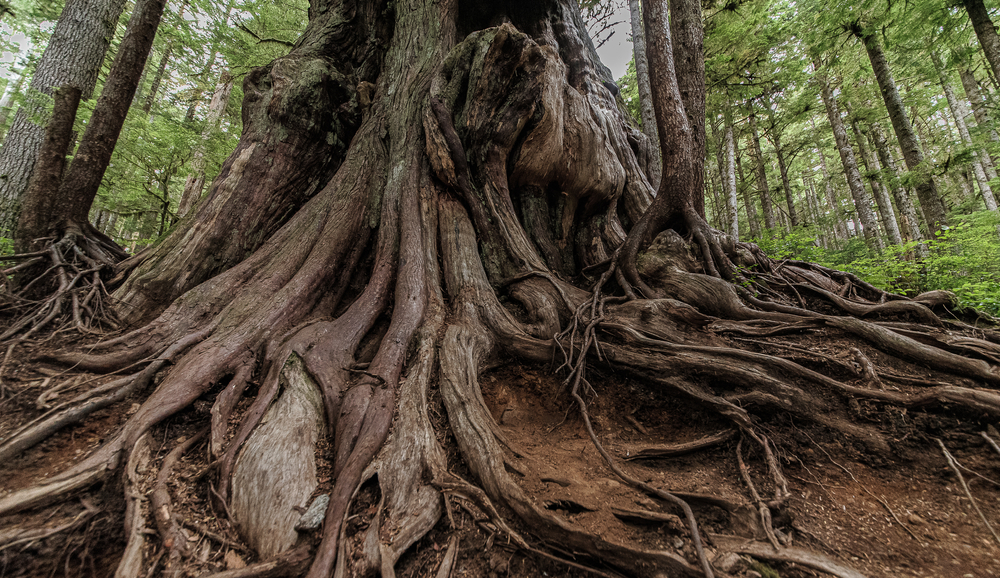
The roots of a giant western red cedar.
Western Red Cedar – Thuja plicata
As mentioned above, the western red cedar is a crucial tree for the indigenous peoples of the Pacific Northwest. Interestingly, it isn’t actually a cedar! True cedar trees are only in the genus Cedrus, while the western red ‘cedar’ is in Thuja. Both, however, are in the same plant family, Cupressaceae.
Size at Maturity
In the wild, the western red cedar can tower up to 175 feet tall. Varieties used in landscaping are typically under 50 feet tall. These ancient trees can live up to 1,000 years old!
Foliage Color
Dark green.
Water Requirements
Prefers moderate to frequent moisture. Does not tolerate drought.
Sun Requirements
Thrives in part shade in warmer climates or full sun in cooler climates.
Soil Requirements
Fertile, well-drained soils. Moderately acidic soils are okay.
Growing Zones
USDA growing zones 5-7.
Japanese Thuja – Thuja standishii
The Japanese arborvitae is a commercially important timber tree in Japan. It is also one of the five sacred trees of Kiso, a productive forest in central Japan. The Japanese thuja isn’t commonly used as an arborvitae in landscaping.
Size at Maturity
20 to 30 feet tall and 10 to 15 feet wide.
Foliage Color
Gray-green
Water Requirements
Needs a moderate amount of moisture. Will not tolerate drought.
Sun Requirements
Full sun in cooler climates and some shade in hotter climates. Does not grow attractively in full shade.
Soil Requirements
Prefers well-drained loams with a neutral to slightly alkaline pH.
Growing Zones
USDA growing zones 5-7.
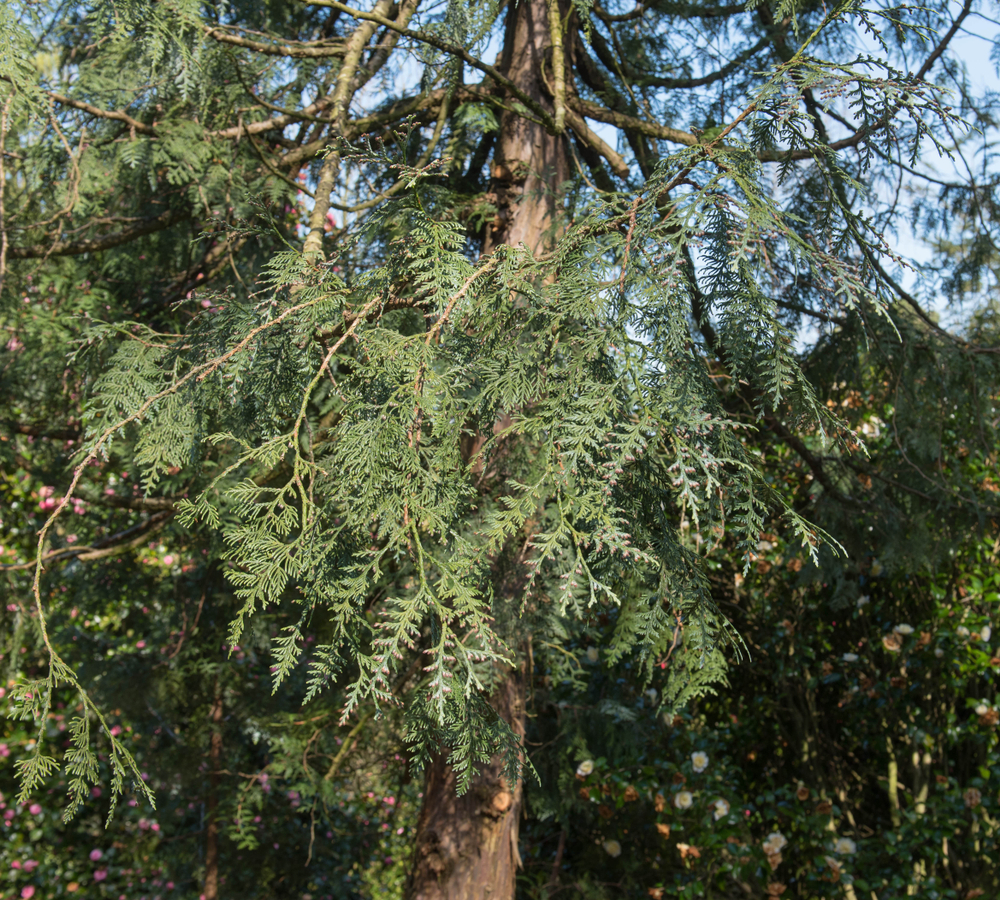
A Korean thuja tree.
Korean Thuja – Thuja koraiensis
The Korean thuja lives in both North and South Korea as well as one locality in China. This arborvitae is rarely used horticulturally because there isn’t a large seed stock.
Size at Maturity
Up to 30 feet tall and 15 feet wide.
Foliage Color
Straight green on top and whitish on the bottom.
Water Requirements
Needs moderate moisture and will not tolerate much drought.
Sun Requirements
Prefers full sun in the cooler climates where it can grow and part shade in the warmer climates in its range.
Soil Requirements
Neutral to slightly alkaline, well-drained loam.
Growing Zones
USDA growing zones 5-8.
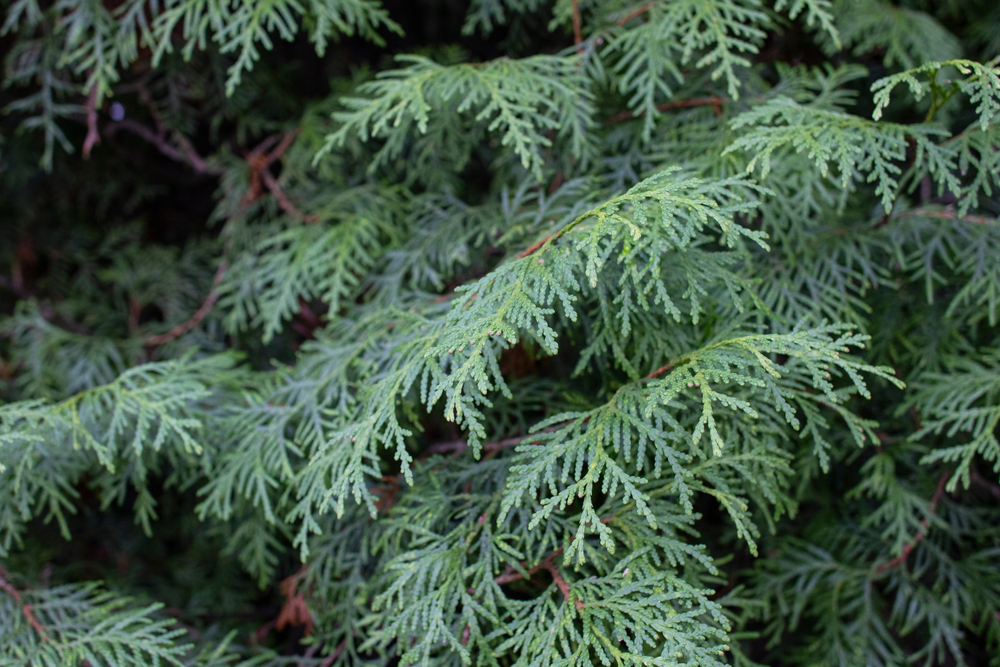
A close-up of Sichuan thuja leaves.
Sichuan Thuja – Thuja sutchuenensis
The Sichuan thuja is the most threatened of wild arborvitae species. In fact, it was thought to be the only conifer extinct in the wild until it was rediscovered in a nature preserve in Sichuan province in 1999. While no conifers are currently extinct, they are a very threatened group of trees. Nearly ⅓ of all conifers are threatened with extinction due to logging, diseases, and climate change.
Size at Maturity
Up to 60 feet tall.
Foliage Color
Deep, vibrant green
Water Requirements
In nature, this tree grows in relatively wet areas that receive 1.5 meters of water per year.
Sun Requirements
Prefers south-facing slopes, so presumably prefers full sun.
Soil Requirements
Grows on limestone mountain faces in thin soils.
Growing Zones
USDA growing zones 6
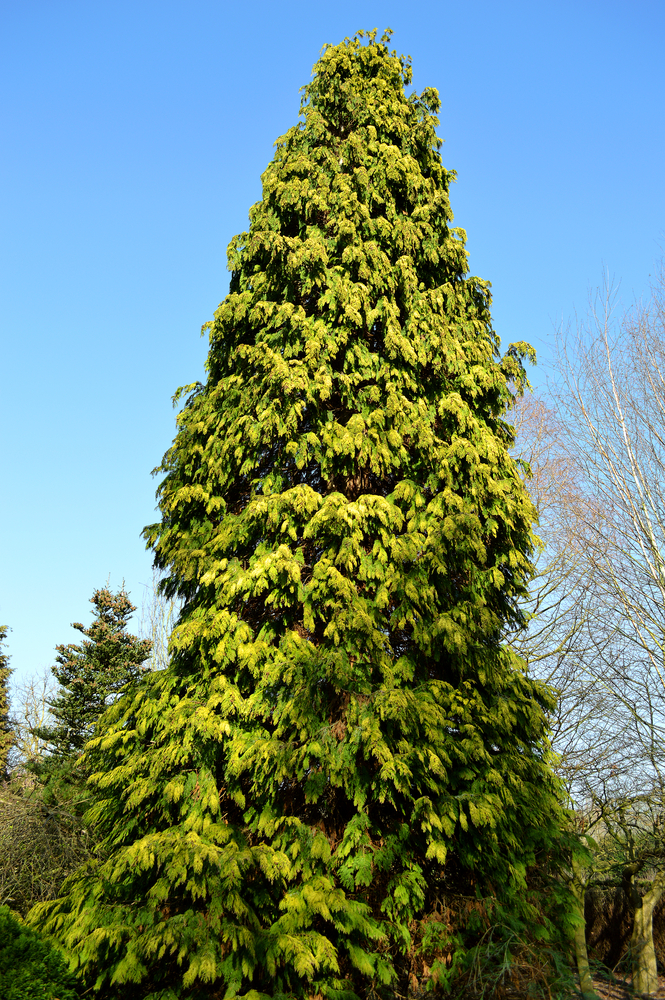
A mature specimen of Thuja occidentalis.
Eastern Arborvitae – Thuja occidentalis
The eastern arborvitae is the main source of horticultural arborvitae varieties. Thuja occidentalis native to eastern North America. Much like the western red cedar, this arborvitae is a useful tree that provided crucial materials for indigenous people of the eastern U.S. Another common name for the eastern arborvitae is the northern white cedar.
This tree is a prime example of how naming plants is confusing! Occidentalis means ‘western’ in Latin, meant to differentiate this Thuja from its old-world counterparts. However, its two common names include ‘eastern’ and ‘northern’! Yikes!
Size at Maturity
Up to 40 feet tall and 20 feet wide.
Foliage Color
Dark green.
Water Requirements
Does not tolerate drought, but doesn’t need too much water, either.
Sun Requirements
Does best in full sun or part shade in hotter parts of its range.
Soil Requirements
Somewhat broad soil tolerance. Doesn’t appreciate acidic soils.
Growing Zones
USDA growing zones 2-7.
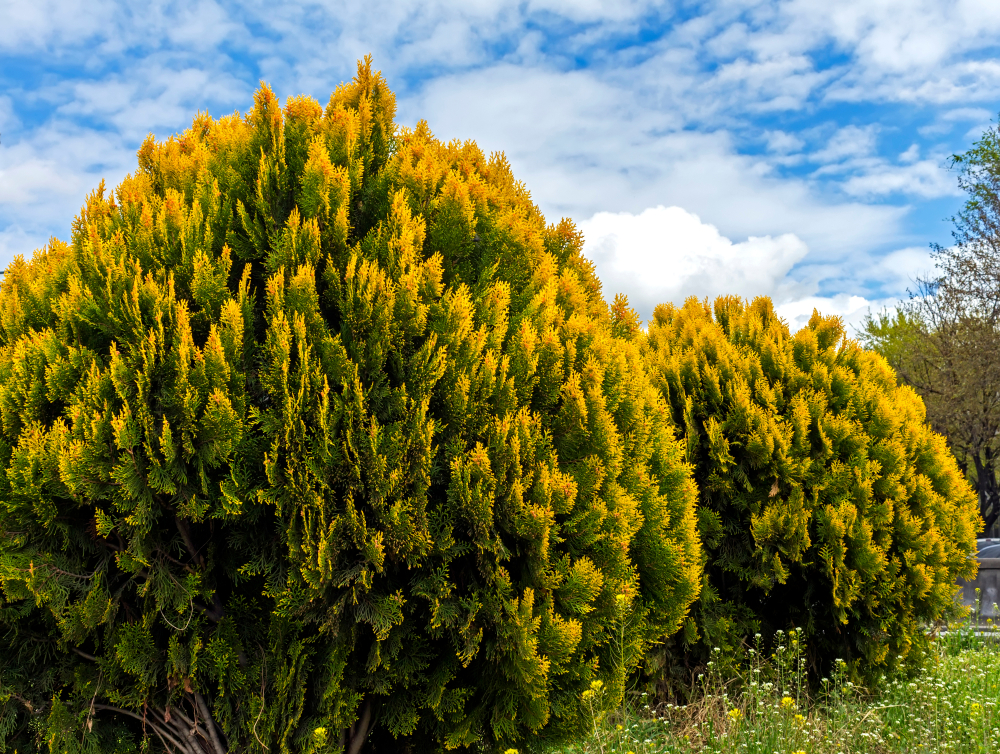
Two mature golden globe arborvitae.
Golden Globe – Thuja occidentalis
The golden globe variety of arborvitae is typically used as an accent in landscapes. The low, symmetrical shape of this shrub, combined with its interestingly-colored, year-round foliage makes it a garden favorite.
Size at Maturity
A globe shape four feet tall by four feet wide.
Foliage Color
Yellow-green to golden foliage.
Water Requirements
Medium moisture. Don’t let dry out.
Sun Requirements
Full sun to part shade.
Soil Requirements
Not particularly picky. Prefers well-drained soils.
Growing Zones
USDA growing zones 2-8.
North Pole Arborvitae – Thuja occidentalis
The north pole arborvitae is perfect for privacy hedges. It grows tall and narrow. These trees quickly fill the space between them when planted close together. As suggested by its name, these trees are particularly relevant for inhabitants of colder climates. They grow in a pyramidal shape.
Size at Maturity
Up to 15 feet tall and 5 feet wide.
Foliage Color
Vibrant green.
Water Requirements
Needs moderate to frequent water. Doesn’t tolerate drought.
Sun Requirements
Full sun to part shade.
Soil Requirements
Well-drained soils.
Growing Zones
USDA growing zones 3-7.
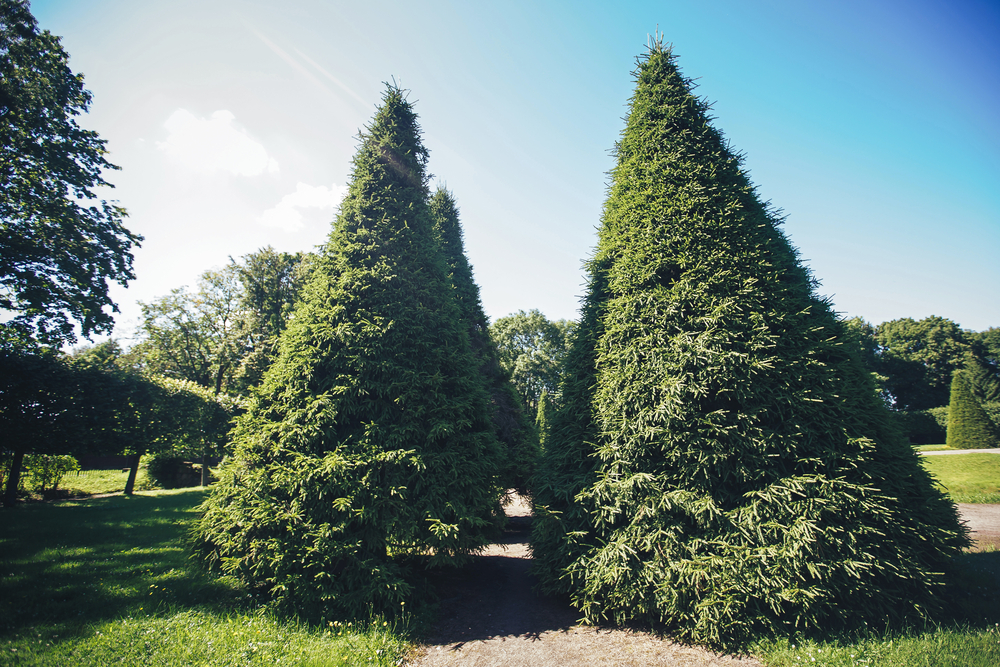
The pyramid shape of the green giant arborvitae crowds a pathway.
Green Giant Arborvitae – Thuja plicata x Thuja standishii
The green giant arborvitae is a hybrid between the western red cedar and the Japanese thuja. This large arborvitae can grow up to 60 feet tall, making it one of the taller arborvitae varieties available. When planted in a row, these tall trees make an exceptional windbreak.
Size at Maturity
60 feet tall and 15 feet wide.
Foliage Color
Dark green foliage.
Water Requirements
Prefers moist soils.
Sun Requirements
Full sun to part shade.
Soil Requirements
This plant will grow best in fertile, well-drained soils.
Growing Zones
USDA growing zones 5-8.
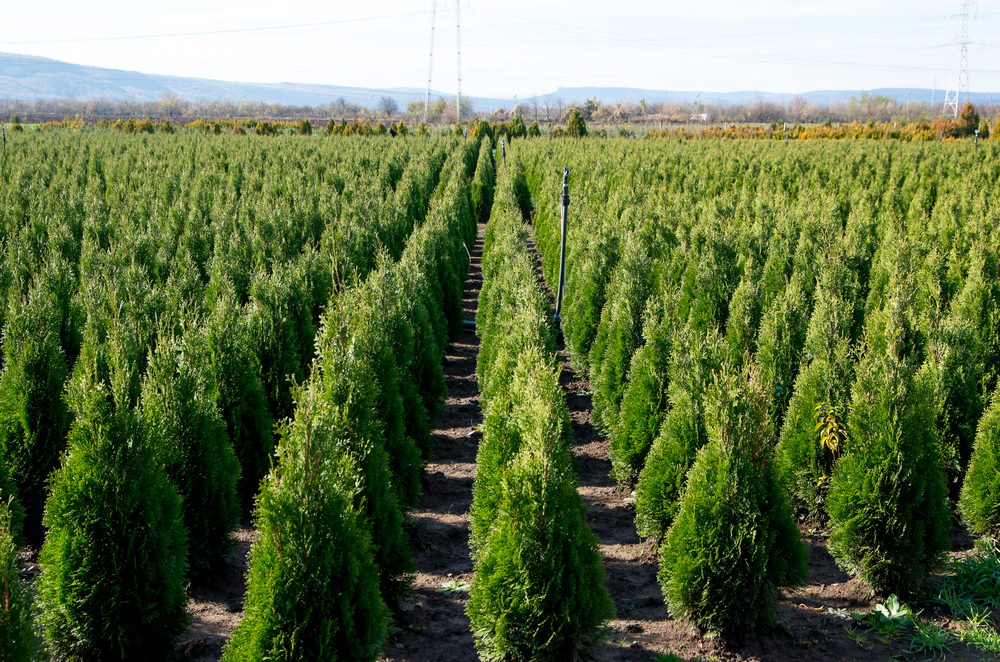
A nursery growing Holmstrup arborvitae in rows.
Holmstrup Arborvitae – Thuja occidentalis
The Holmstrup arborvitae grows slower than other varieties, putting on about a foot of height per year. When full-grown, this pyramidal shape arborvitae is smaller than other varieties. This more compact stature makes it a good candidate for smaller areas.
Size at Maturity
15 feet tall and 5 feet wide.
Foliage Color
Green with a slight golden hue.
Water Requirements
Tolerates a moderate to ample amount of moisture. Doesn’t do well in drought.
Sun Requirements
Full sun to part shade.
Soil Requirements
Well-drained loams.
Growing Zones
USDA hardiness zones 3-7.
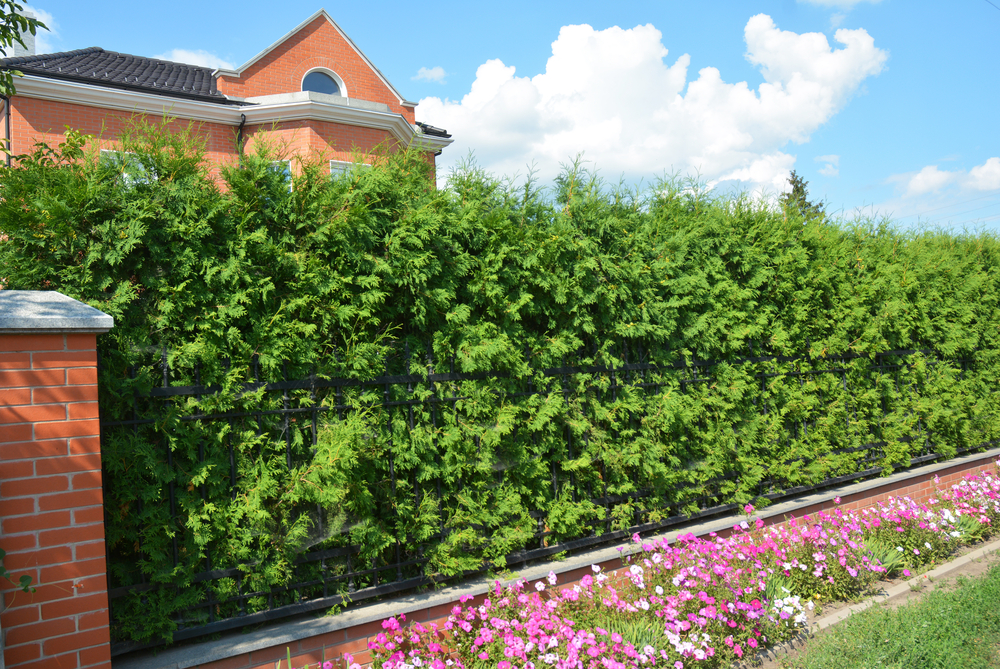
A privacy screen made up of American arborvitae.
American Arborvitae – Thuja occidentalis ‘smaragd’
Also known as the emerald green arborvitae, the American arborvitae has vibrant foliage that stands out year-round. Like the Holmstrup arborvitae above, this variety is a slower-growing, semi-dwarf tree. Unlike the Holmstrup arborvitae, this emerald green arborvitae comes from the western red cedar species rather than the eastern arborvitae.
Size at Maturity
14 feet tall and 4 feet wide.
Foliage Color
Emerald green foliage.
Water Requirements
Moderate to moist soils.
Sun Requirements
Full sun to part shade. Foliage will become less dense in full shade.
Soil Requirements
Average, well-drained soils.
Growing Zones
USDA growing zones 2-7.
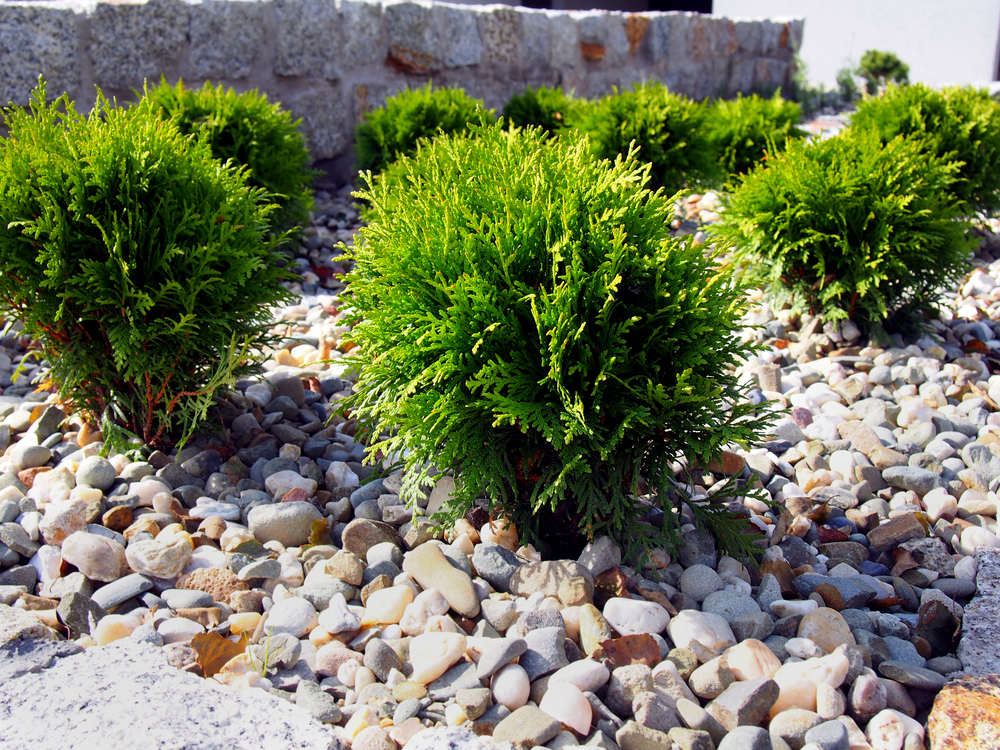
The dwarf Danica arborvitae contrasts with the rocks beneath.
Danica Arborvitae – Thuja occidentalis ’Danica’
The Danica arborvitae is a true dwarf variety. When fully grown, this tree-turned-shrub will only reach two feet off the ground. It makes an excellent accent in gardens and grows well in pots. The Danica arborvitae can frame pathways, entrances, and define outdoor areas. This dwarf arborvitae is slow-growing. Isn’t it interesting that humans have bred majestic trees to become compact shrubs?
Size at Maturity
A globe two feet tall by two feet wide.
Foliage Color
Emerald green.
Water Requirements
Moderate to moist areas.
Sun Requirements
Full sun.
Soil Requirements
Good for rocky soils. Will grow in most average soils.
Growing Zones
USDA growing zones 2-7.
Techny Arborvitae – Thuja occidentalis
The Techny arborvitae is named after the town of Techny, Illinois, where it was found. This arborvitae is an excellent contender for privacy hedges because it has multiple leaders, meaning the top of the tree may be more full than some other arborvitae varieties. Since this arborvitae is also somewhat wider than most, be sure not to plant them too close together.
Size at Maturity
15 feet tall by 10 feet wide. Some specimens can reach 30 feet tall, but this is unusual.
Foliage Color
Dark green foliage.
Water Requirements
Prefers moderate to moist areas.
Sun Requirements
Full sun to part shade.
Soil Requirements
Well-drained soils.
Growing Zones
USDA growing zones 2-8.

Woodward Globe Arborvitae in a park.
Woodward Globe Arborvitae – Thuja occidentalis ‘Woodwardii’
The Woodward globe arborvitae is the best choice for a larger orb-shaped Thuja. The foliage on this plant has an intriguing, lacy, layered appearance. This variety does well against the sides of houses and as a background landscaping accent. The Woodward globe arborvitae can also be grown as a taller hedge instead of a globe.
Size at Maturity
15 feet tall by 10 feet wide, though often preferred more compact.
Foliage Color
Emerald green to yellow-green foliage.
Water Requirements
Moderately wet to moist soils.
Sun Requirements
Full sun.
Soil Requirements
Well-drained loams.
Growing Zones
USDA growing zones 3-7.
Weeping Arborvitae – Thuja occidentalis ‘Filiformis’
The weeping arborvitae is an unusual variety. This type of arborvitae has drooping foliage that hangs from multiple stems. Upon initial appearance, it doesn’t look like an arborvitae. However, a closer look at the scale-like leaves reveals its heritage. This tree doesn’t make an effective privacy hedge or windbreak.
Size at Maturity
8 feet tall by 4 feet wide.
Foliage Color
Light green to yellow-green foliage.
Water Requirements
Moderately wet to moist soils.
Sun Requirements
Full sun or partial shade.
Soil Requirements
Fairly tolerant of most average soil types. Likes well-draining soils.
Growing Zones
USDA growing zones 2-7.

The unusual whipcord arborvitae.
Whipcord Arborvitae – Thuja plicata ‘Whipcord’
The whipcord arborvitae is a unique dwarf variety. In some cases, this arborvitae variety can act almost as a ground cover. It comes from the western red cedar, which is one of the largest tree species on the Earth! Isn’t it wild that we have reduced it down from 175 feet to just a few feet in height?
The foliage of the whipcord arborvitae is long, slender leaves that droop almost like the weeping arborvitae.
Size at Maturity
Up to four feet tall and wide. However, some gardeners prefer to keep it much lower to the ground.
Foliage Color
Varies. Yellow-green to emerald green depending on individual specimen and time of year.
Water Requirements
Likes moist soils. Works well in rain gardens.
Sun Requirements
Full sun to part shade.
Soil Requirements
Average, well-drained soil.
Growing Zones
USDA growing zones 5-7.
Ready to Plant?
If any of these arborvitae caught your eye, you’re probably in luck! These trees are typically well-stocked at most nurseries. Remember to adhere to the spacing recommendations if you plan to plant a continuous hedge. Planting the trees too close together will lead to less healthy trees in the future. Before you commit to arborvitae, you should consider true cedars as well!
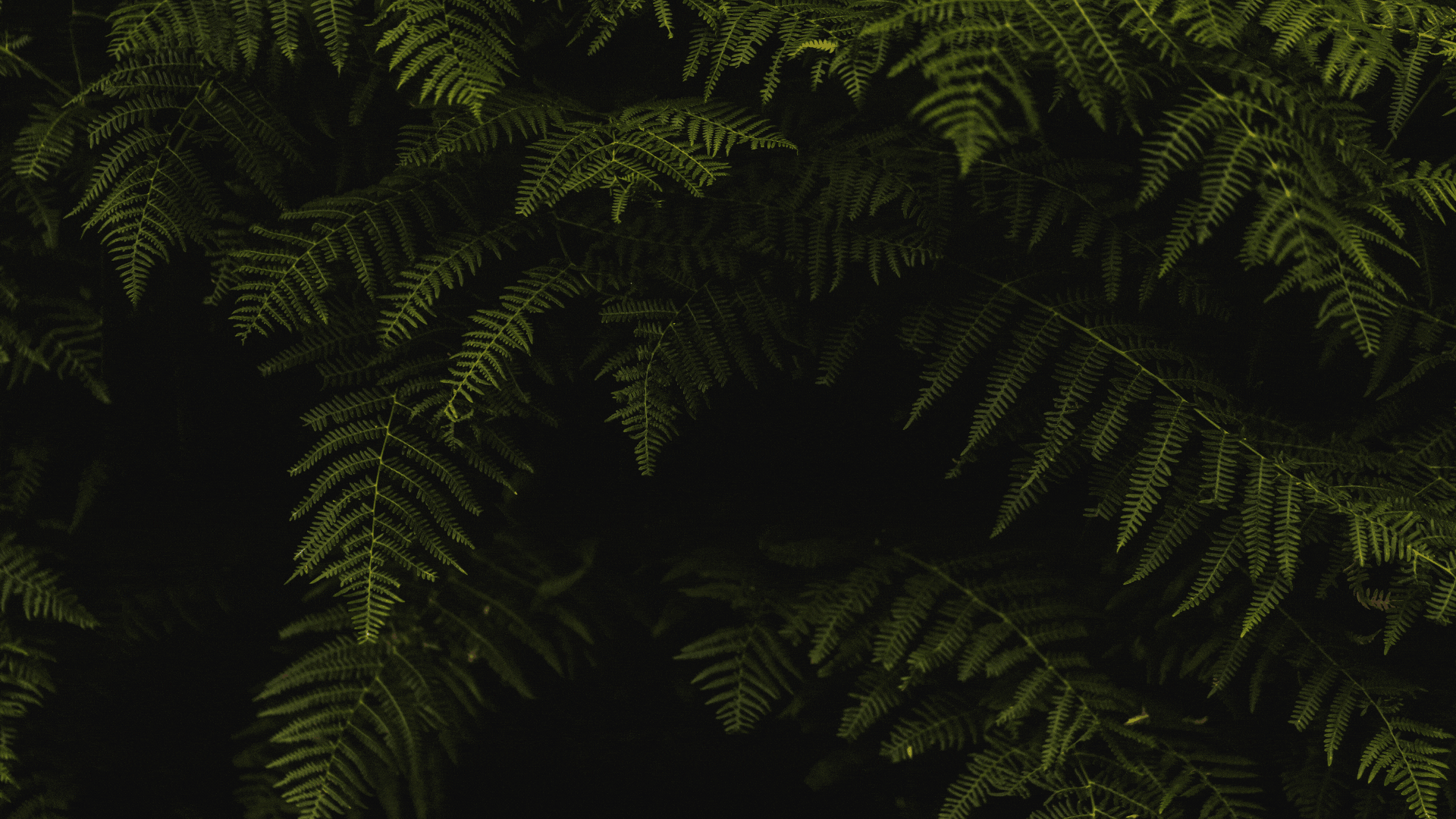











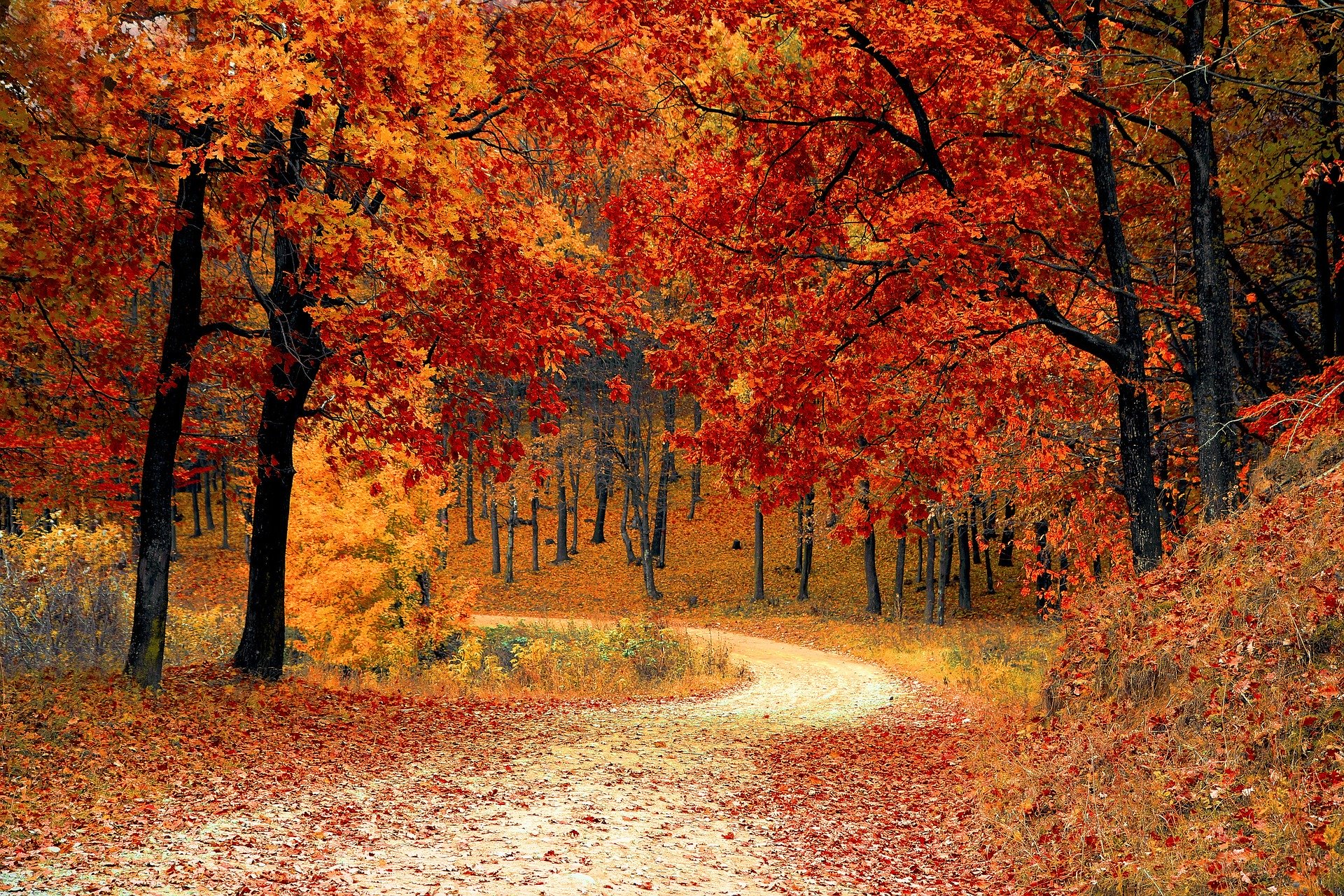
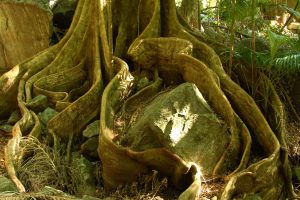

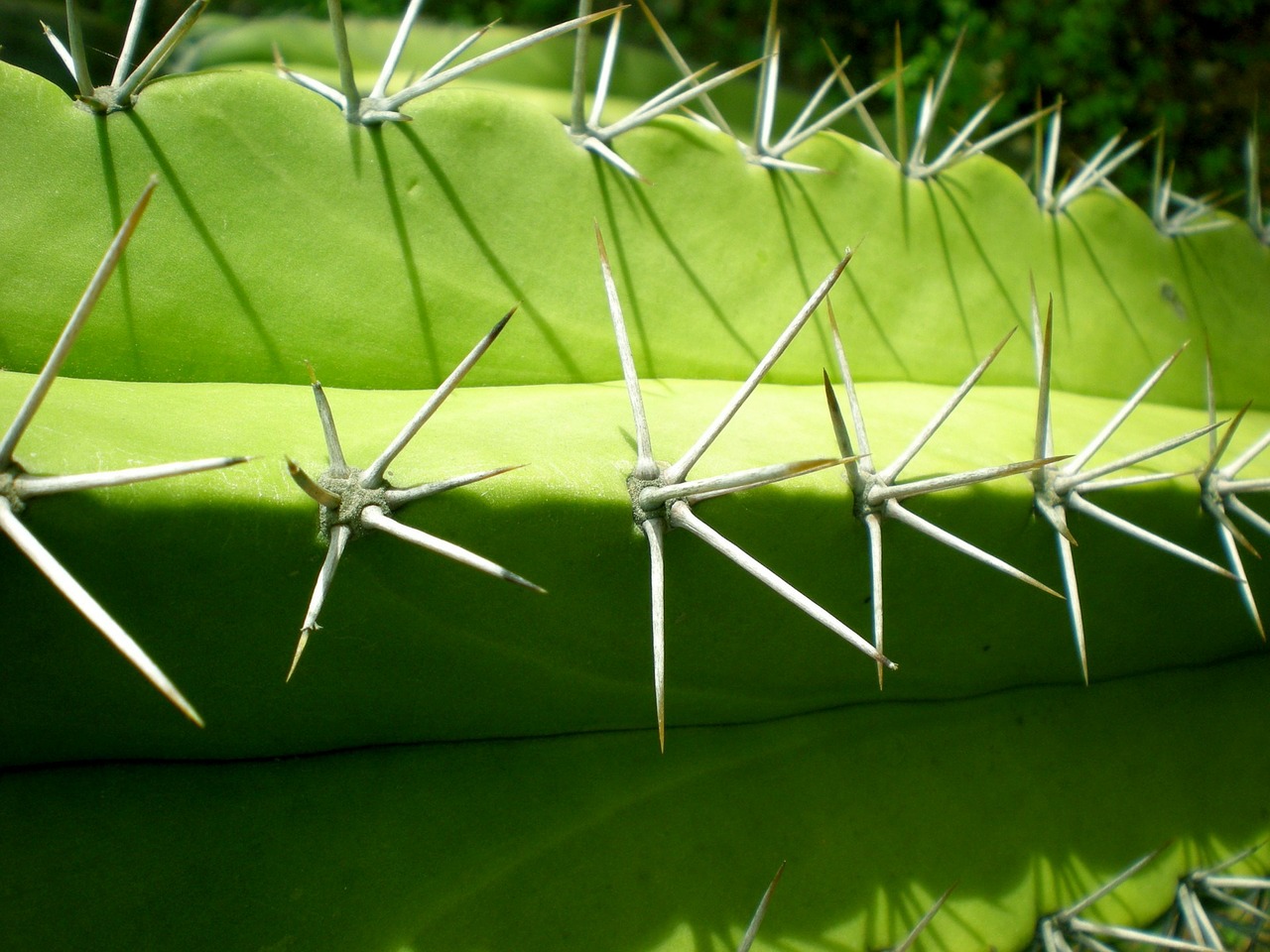
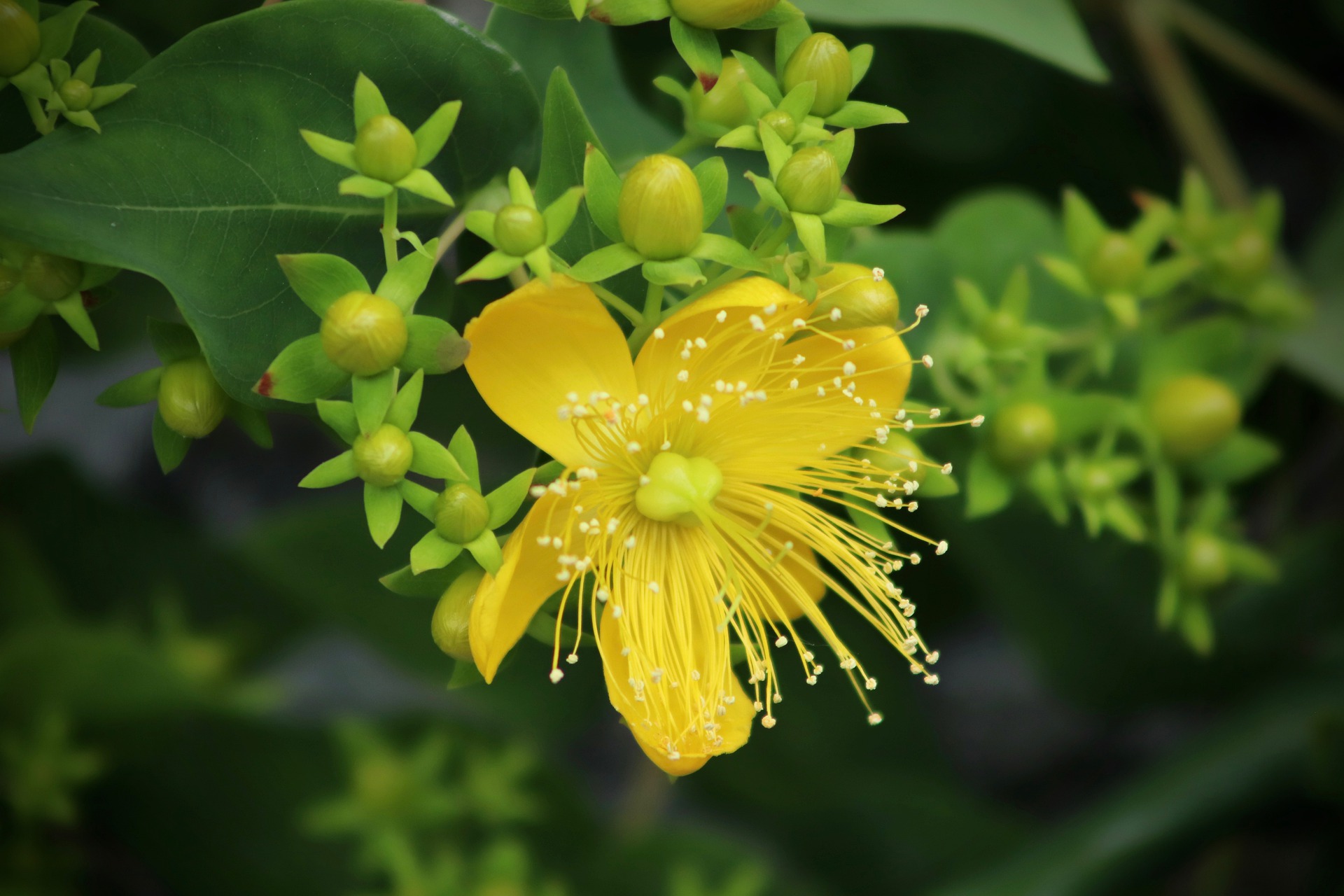
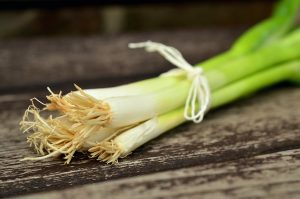
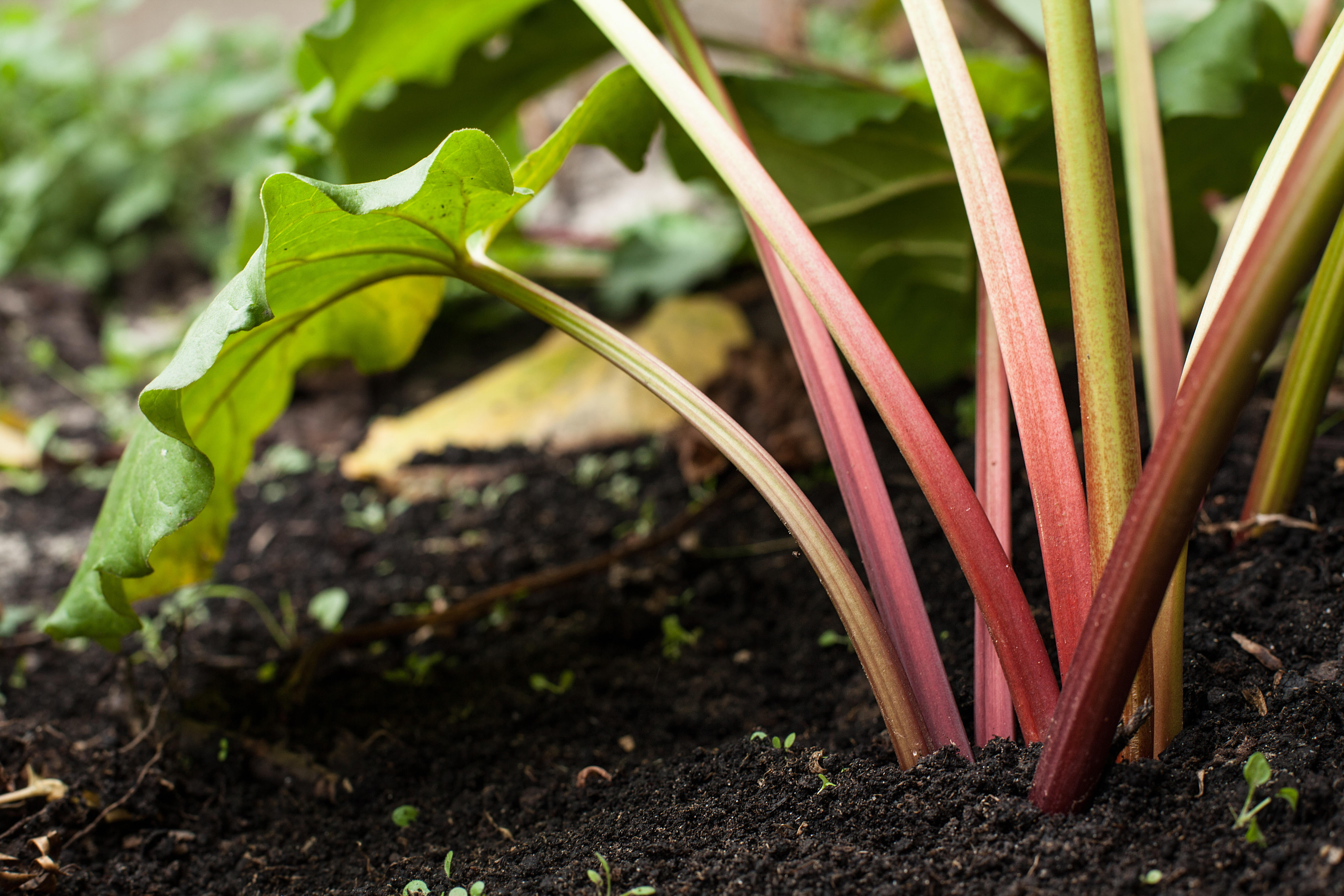
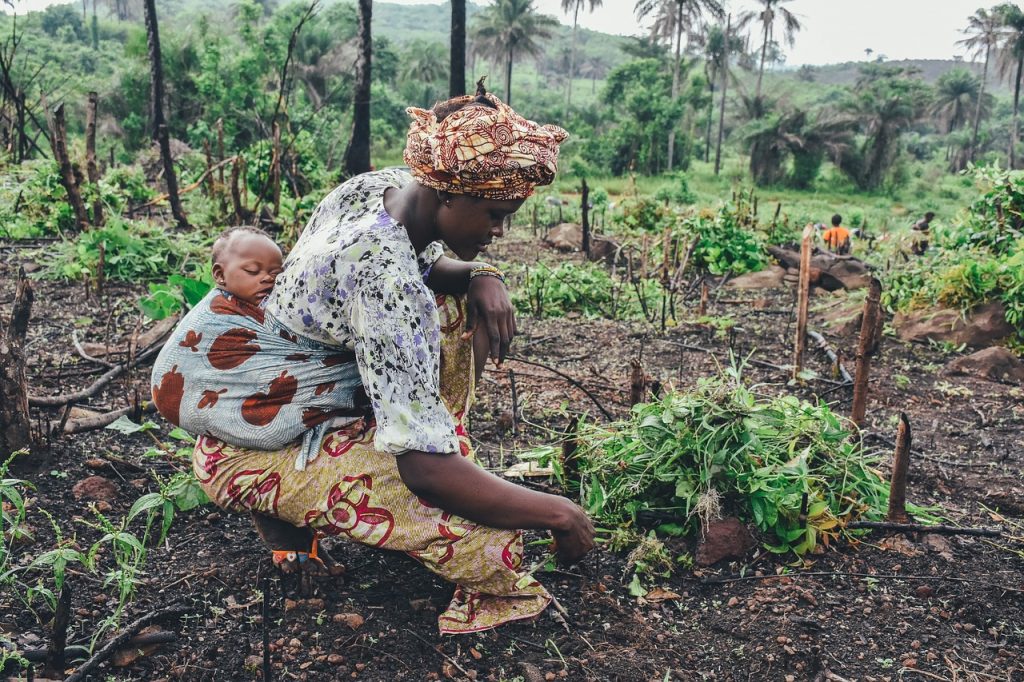
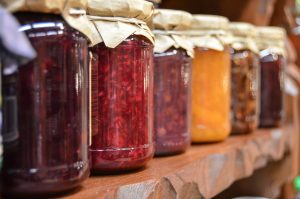
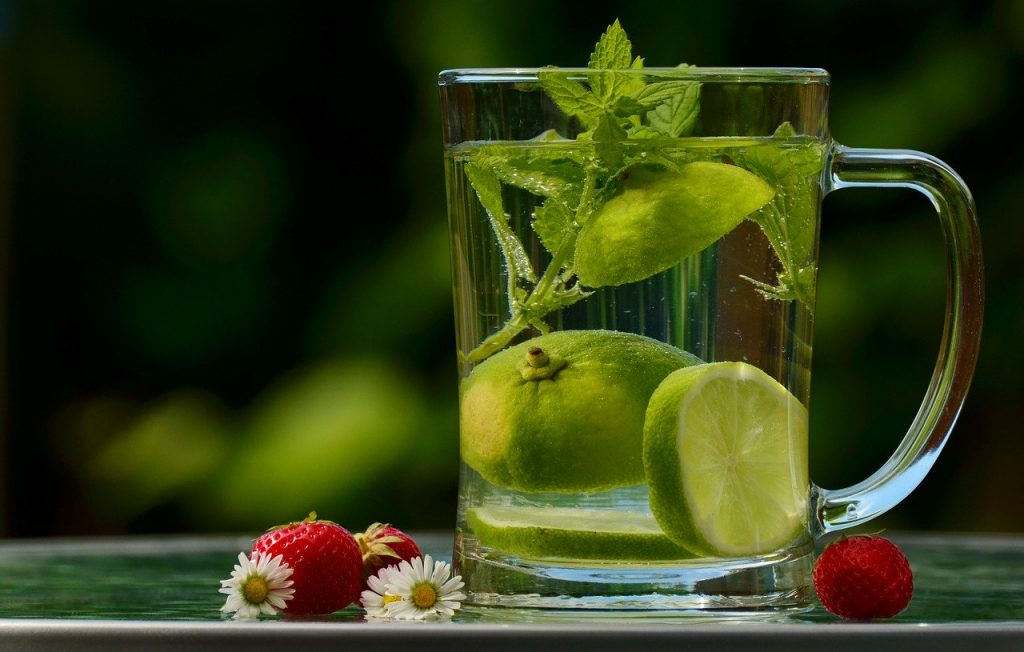
0 Comments